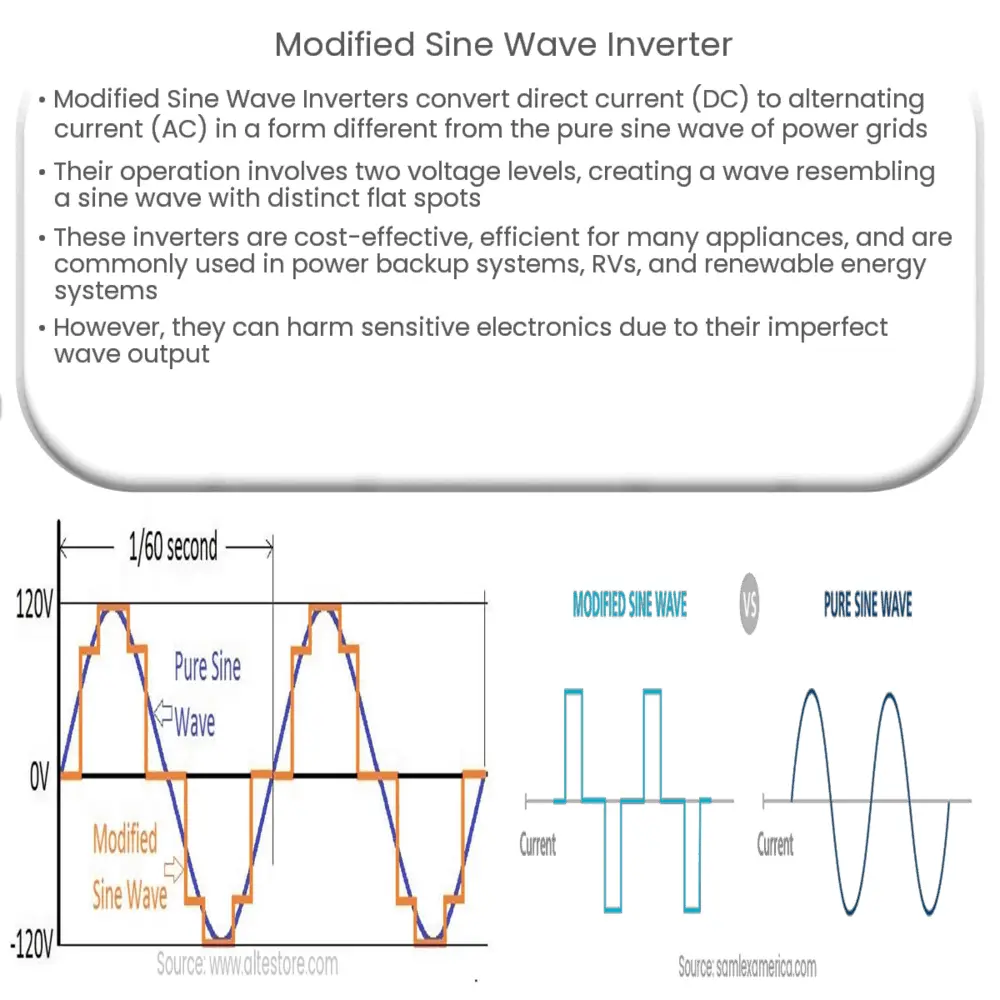Explore the workings, applications, advantages, and disadvantages of Modified Sine Wave Inverters in our comprehensive guide.

Introduction to Modified Sine Wave Inverters
A Modified Sine Wave Inverter is a critical device in the field of electronics and power systems. It is designed to convert direct current (DC) to alternating current (AC), a function that is incredibly important in various electrical appliances and systems. However, the output it produces is not exactly like the pure sine wave that we get from the power grid; rather, it is a modified form of it, hence the name.
The Working Principle of Modified Sine Wave Inverters
A modified sine wave inverter operates by generating a waveform that is an approximation of a pure sine wave. It involves a simple process, characterized by two voltage levels: positive and negative. These are transmitted to the load in a specific sequence, resulting in a wave that resembles a sine wave but with distinct flat spots at the peak and zero-crossing points.
Components of a Modified Sine Wave Inverter
- DC Source: The power source that supplies direct current. This could be a battery or a solar panel.
- Inverter Circuit: This is where the conversion from DC to a modified sine wave AC occurs.
- Output Filter: This component is responsible for smoothing out the waveform and eliminating high-frequency noise.
Applications of Modified Sine Wave Inverters
Modified sine wave inverters are widely used due to their cost-effectiveness compared to pure sine wave inverters. Their applications are vast, but they are most commonly found in:
- Power Backup Systems: In case of power outages, these inverters are used to provide a continuous power supply.
- Recreational Vehicles (RVs): They are used to power appliances in RVs using the vehicle’s battery.
- Renewable Energy Systems: In solar and wind power systems, these inverters convert the DC power generated into AC power that can be used in homes.
However, the use of modified sine wave inverters is not recommended for sensitive electronic devices due to the risk of damage caused by their imperfect wave output.
Advantages and Disadvantages of Modified Sine Wave Inverters
There are several advantages and disadvantages to using modified sine wave inverters. Understanding these can help individuals and businesses make informed decisions on their use.
Advantages
- Cost-Effective: Modified sine wave inverters are generally cheaper than pure sine wave inverters, making them an attractive option for many users.
- Efficiency: These inverters are highly efficient for many common household appliances.
- Availability: Due to their popularity, these inverters are readily available in various power ratings.
Disadvantages
- Harmonics: The imperfect wave output can produce harmonics, which may cause problems in some electronic devices.
- Noisy Operation: Some devices may run noisier or exhibit erratic behavior when powered by a modified sine wave.
- Damage to Sensitive Equipment: Some sensitive electronics may not only operate inefficiently but could potentially be damaged.
Conclusion
In conclusion, a modified sine wave inverter plays a crucial role in power conversion, particularly in areas where the precise reproduction of a sine wave is not a primary concern. It offers a cost-effective and efficient solution for running many common appliances. However, its use is not recommended for sensitive electronic devices due to the risk of damage. Despite this, the modified sine wave inverter remains a pivotal component in many power systems due to its affordability, efficiency, and widespread availability. As with any technology, understanding its strengths and limitations is key to leveraging its capabilities to the fullest.

